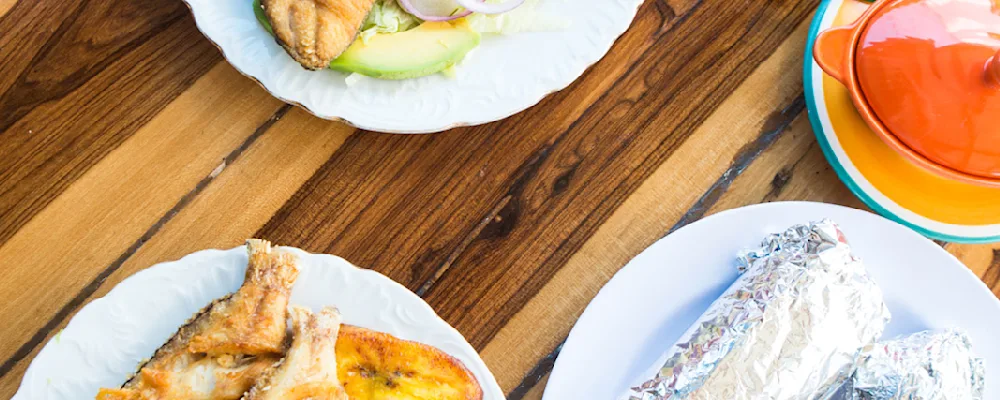
CARIBBEAN FOOD | TOP 10 DISHES YOU NEED TO TRY IN CURAÇAO
By Chris Rosa
 TEILEN
TEILENThe colorful buildings in the downtown district of Willemstad are a good representation of our vibrant culture. Our diverse cuisine, in particular, is a defining aspect of our culture that has been enriched all throughout history. Visiting Curaçao is more than simply visiting a single Caribbean paradise. Some local dishes warp a new space and time around you. Among the many influences, our food tells stories of South American migration, the slave trade, and our strong ties to The Netherlands dating back to colonial times. I’ll be your guide.
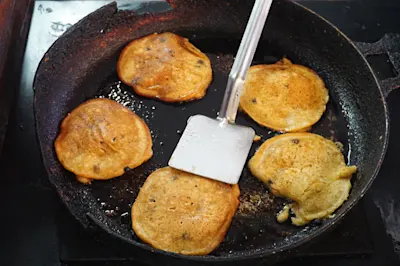
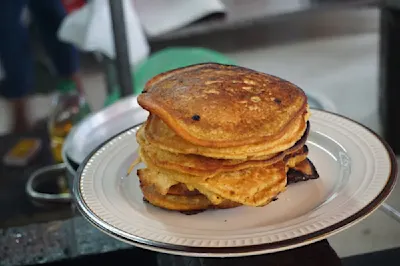
1. Arepa Di Pampuna (Pumpkin Pancakes)
Yes, yes, yes, the idea of making vegetable pancakes is questionable, but you need to trust me on this one. These pancakes are traditionally made with the “pampuna dòl di webu,” the so-called “egg yolk pumpkin” in reference to the vegetable’s richness in color, texture, and flavor. Comparable to the Japanese kabocha squash, these pumpkins are sweeter than most squashes, but the raisins add the real kick here. Your random bites in these juicy little dynamites trigger an explosive sweetness that elevates the flavor of these pancakes to a 10. You can get pumpkin pancakes at various cafes and grocery stores in Curaçao. If you happen to be in downtown Willemstad, you can swing by the Old Market and get your pumpkin pancakes from Zus di Plaza, which loosely translates to “Sister from the Market.” She's a true icon like Jenny from the block. Unfooled by the props that she’s got, Zus has been serving traditional Curaçaoan dishes in the Old Market since the 70s.
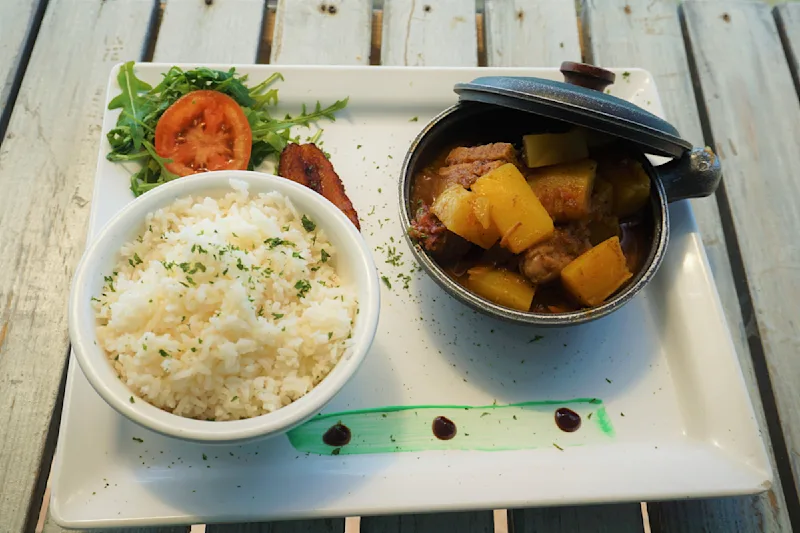
2. Papaya Stobá (Papaya Stew)
Ok, the idea of stewing papaya with meat and a pigtail may make you turn up your nose. You must think Curaçaoans are absolutely insane by now, and you are absolutely right. Hear me out, though. The papaya is one of the most abundant fruit trees in Curaçao, and this has uniquely afforded our locals the ability to craft this surprisingly tasty dish. The sweetness of the papaya is balanced out perfectly by the salted meat and pigtail. Just like that, without any magic wands, you’ve got a delicious sweet and savory dish you never thought was possible – The papaya stew, proudly signed by Curaçao.
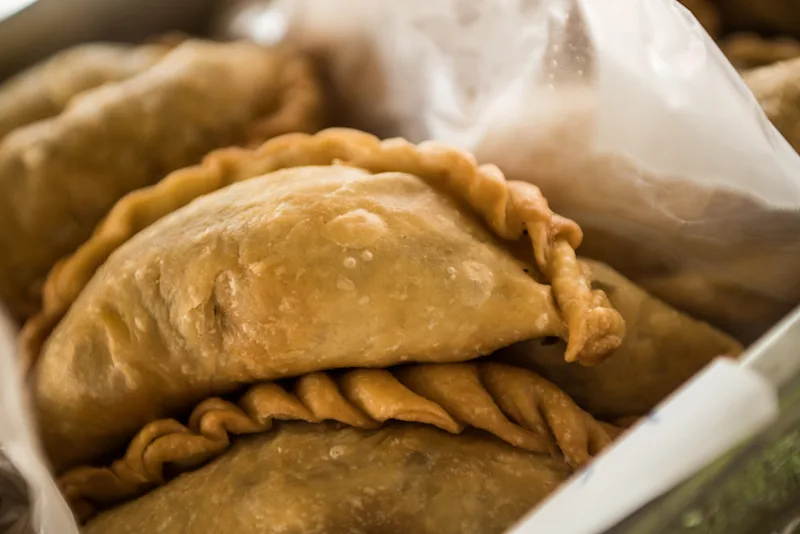
3. Pastechi
Pastechis are crescent-shaped pastry snacks filled with cheese, beef, chicken, tuna, cod, or vegetables. Pastechis are popular for breakfast, so the freshest of these golden brown goodies are found in the morning at grocery stores or roadside snack-bars. All I can say about these half-moon pastries is that they may just become your better half.
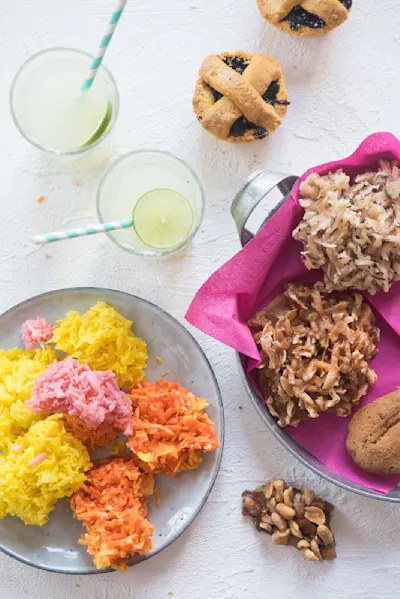
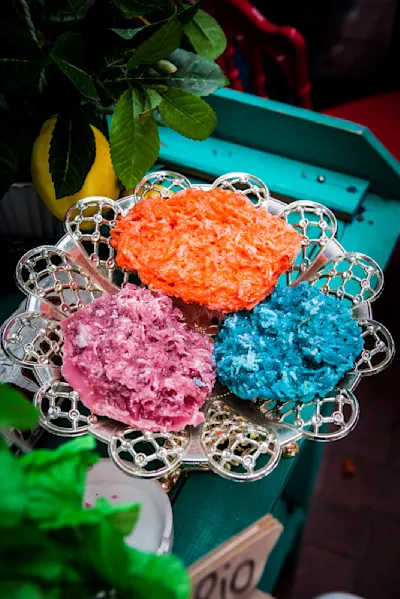
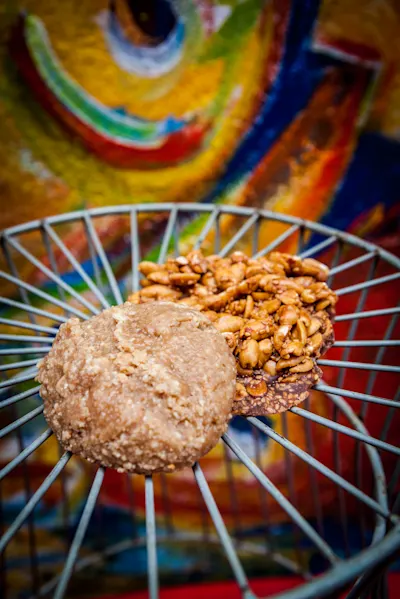
4. Kos di Boka Dushi (Assorted sweets)
“Dushi” is the most iconic word in Papiamentu. Dushi can mean “enjoyable,” “sweet,” or even “sweetheart.” We use it to describe music, people, experiences, and even food. “Kos di boka dushi'' or “sweet mouth things” is how we describe our assorted sweets. One of the most popular confections in Curaçao takes the third letter of the word Dushi – the S-shaped peanut cookie called “lèter di pinda.” Grateful for the elders from whom these cookies hail down from, we pledge to never change the letter or else we may as well renounce our culture. Some other popular confections in Curaçao are the panseiku (peanut brittle), tentalaria (cashew mush treat), tert di pruimu (prune tarts), kokada (coconut flake candy), ko’i lechi (milk fudge).
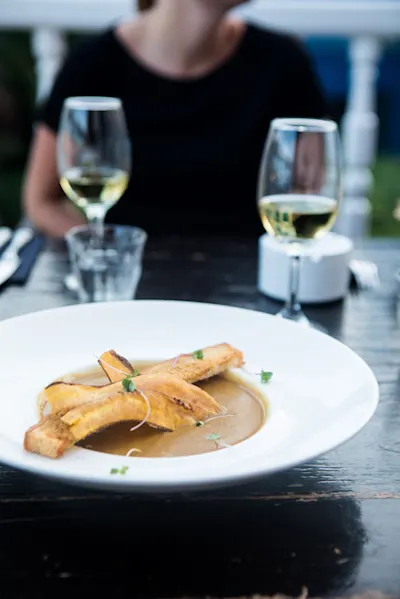
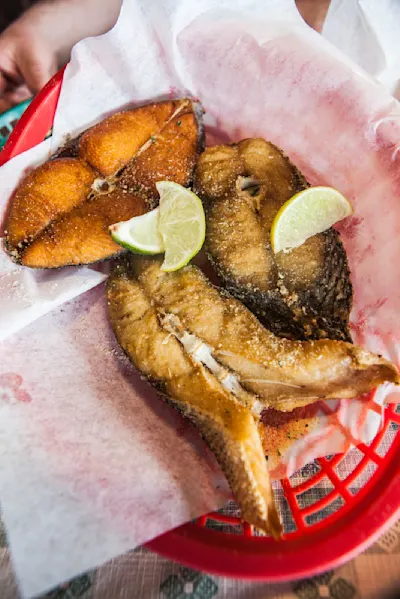
5. Sopi di Banana (Plantain Soup)
The “sòpi di banana” is actually a plantain soup. In Papiamentu, “bakoba” is the word for banana, and “banana” is the word for plantain. The plantain soup is yet another unusual use of a fruit because soups are typically made with vegetables. Unlike bananas, however, plantains are more starchy like yuccas and potatoes, which explains why they are commonly used as vegetables. Much like the technique used in the papaya stew, the plantains are often cooked with salted beef and uncured pigtail to balance out the sweetness of the fruit. The result is the savory and sweet creaminess that is as delicious as it is comforting.
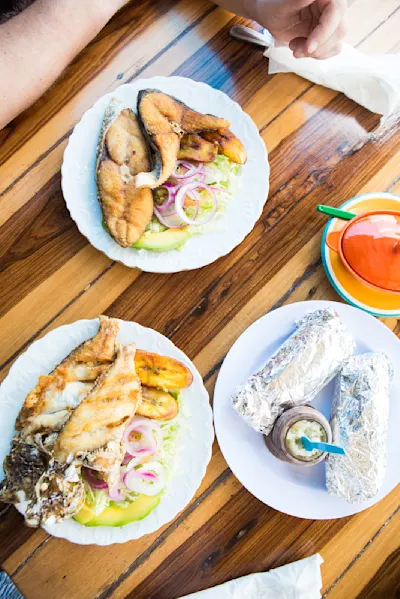
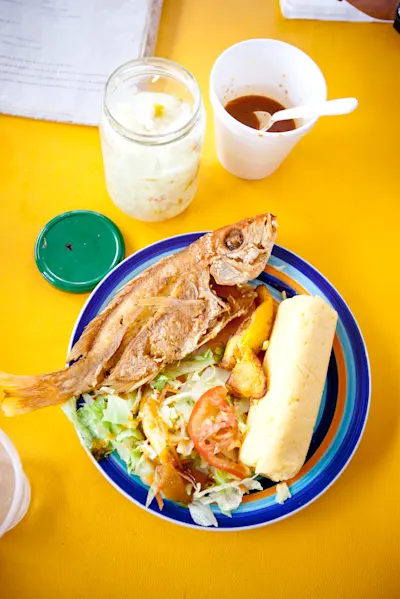
6. Fried fish
By virtue of being surrounded by water, we are blessed with fish, and that means a lot of fried fish. Some of the popular fish we fry in Curaçao are red snappers, mahi mahi (or dolphin fish), big eye scads, and groupers. Fried lionfish and lionfish ceviche have also become popular as divers are encouraged to hunt the invasive species to protect our coral reefs. Fried fish is often served with rice, fried or mushy cornmeal, and/or fried plantains. The best place to eat fried fish and feel like a local is at Kas di Piskado Purunchi, a short drive from Punda and Otrobanda.
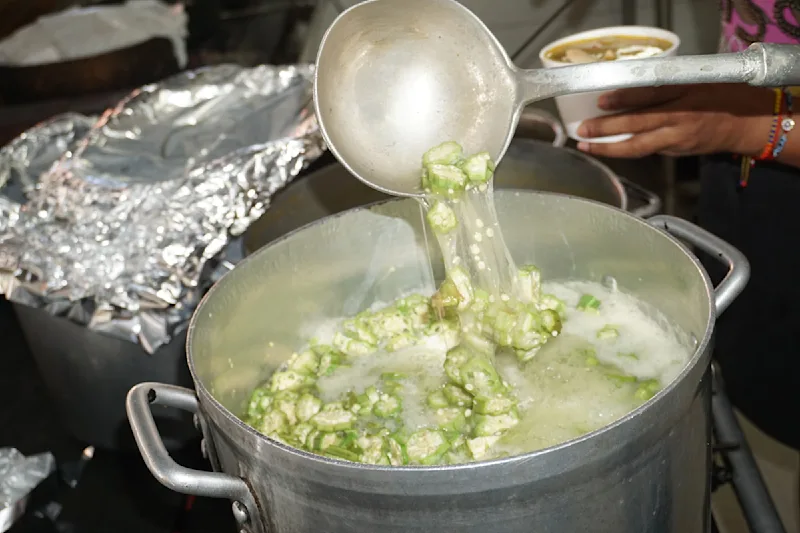
7. Jambo / Guiambo (Okra Soup)
The okra soup is one of those dishes that are immune to indifference. The soup has a slippery feel that gives some the shivers while others drool in anticipation to slurp their bowl empty. The soup is commonly served with a side of cornmeal mush, a meal transported across the atlantics in the strong minds of enslaved Africans who worked the plantations of Curaçao and lived in “kas di pal’i maishi,” the so-called corn stalk houses. Okra soup can be found at the Old Market in Punda or at Restaurant Komedor Krioyo. Some other popular soups are the “sòpi di yuana” (iguana soup), sòpi di mondogo (tripe soup), and sòpi di kadushi (cactus soup).
8. Tutu
Tutu, the Papiamentu word for “cute,” is basically a mush of cornmeal and beans commonly rolled into a cylinder. We often incorporate cornflowers and water into cooked black-eyed peas or kidney beans to make tutu. If preferred, cheese is melted onto the warm tutu a melted hearted after eating the very same tutu. Is that cute, or just cheesy?

9. Keshi Yená (Stuffed Cheese)
Talking about cheese, the stuffed cheese, locally known as “keshi yená,” is the signature dish of Curaçao. Given our colonial ties with The Netherlands, a world-class producer and exporter of cheese, we have embraced and incorporated the product in many of the meals on this list. The stuffed cheese, in particular, has a filling of chicken or meat, vegetables, dried fruits and various spices. Although less common now, elders used to cook the stuffed cheese in plantain leaves, a popular cooking method as we will further explore in the next dish.

10. Ayaka
Last but definitely not least, Ayakas are a staple in Curaçaoan cuisine. Adapted from our Venezuelan neighbors, Ayakas (or Hallacas in Spanish) are the most popular holiday meal in Curaçao. They are essentially a cornmeal dough stuffed with meat, chicken, and/or pork along with vegetables and dried fruits. Ayakas are wrapped in plantain leaves before boiling. The multicultural heritage of the meal is evident in its European ingredients such as raisins and olives, Indigenous ingredients such as annatto seeds for coloring, and the African methods of cooking with plantain leaves. The dish originates from enslaved Africans who cooked leftovers of their master's Christmas festivities in cornmeal dough. Ayakas are a must try if you are visiting Curaçao during the holidays.
As you can see, our eclectic cuisine draws inspiration from various elements in our rich history. Some widely used ingredients such as the kecap manis used in our beloved peanut sauce has deeply cemented itself in our culture by nature of our shared Dutch colonial history with Indonesia, a country located as far away from Curaçao as it possibly can. With that being said, I invite you to look deeper into the stories behind your favorite dishes and to eat your way through Curaçao!






